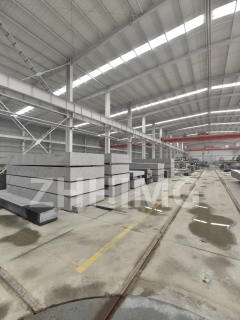Precision granite rails are an essential part of measuring and calibration tools in various industries. However, they can become damaged over time due to various reasons like wear and tear, accidental drops or impacts, etc. If not repaired timely, these damages can affect the accuracy of measurement, and in serious cases, render the equipment unusable. In this article, we will discuss some effective ways to repair the appearance of damaged precision granite rails and recalibrate their accuracy.
Step 1: Inspect the Granite Rail
Before beginning the repair process, it is essential to examine the granite rail thoroughly. Look for any cracks, chips, or signs of wear and tear on the surface. Check if there are any gouges, scratches, or misalignments that could affect the accuracy of the measurement. Also, note the extent of the damage, as some damages may require professional help.
Step 2: Cleaning the Granite Rail
Cleaning the granite rail is essential before any repair work starts. With all kinds of dirt, grime and debris, the surface of the rail must be free from contaminants. Use a soft brush or sponge with eco-friendly cleaning products to avoid further damage to the granite. Once cleaned, dry the surface of the granite rail with a clean, dry cloth.
Step 3: Chip repair and grinding
If there are minor chips or scratches, use an epoxy resin to fill and smooth them out. This ensures that there are no weak spots in the rail that could lead to further damage. Next, use a grinding wheel to level out the surface, which removes any leftover excess epoxy and makes for a smooth and even surface.
Step 4: Resurfacing or Re-grinding
For more extensive damages, resurfacing or re-grinding may be necessary. Resurfacing is performed by creating a new surface on the granite rail. This process is done by using a CNC machine or an industrial diamond grinding machine, which removes a thin layer on the surface to recreate an even surface. This is essential when the accuracy of the measuring equipment has been affected.
Step 5: Recalibrating the Rail
Once the repair work is done, it’s time to recalibrate the granite rail. This is the most crucial step, where accuracy is tested and ensured. This can be done by using calibrated standards for the specific calibration process.
In conclusion, precision granite rails are expensive and require proper maintenance to last long and function accurately. However, accidents can happen, and damage is inevitable. By following the steps mentioned above, one can repair the appearance of the damaged precision granite rail and recalibrate its accuracy, giving it an extended life. Remember, a well-maintained precision granite rail is essential to maintaining the quality and accuracy of your measuring equipment.
Post time: Jan-31-2024

